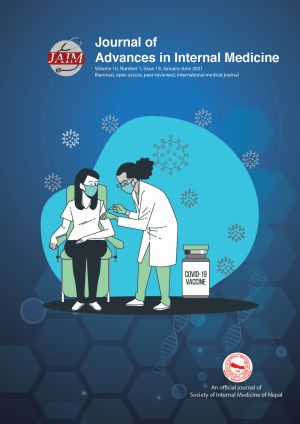Comparing four standard Sleep Questionnaires to Polysomnography to predict possibility of Obstructive Sleep Apnea and its severity
DOI:
https://doi.org/10.3126/jaim.v10i1.37089Keywords:
Obstructive Sleep Apnea, Questionnaire, Polysomnography, Sensitivity, SpecificityAbstract
Background and Aims: Obstructed Sleep Apnea (OSA) is emerging as a significant problem in South East Asia with the rise of Obesity. Polysomnography (PSG) being expensive in Nepal, is usually deferred. The commonly used screening tools are cornerstone to evaluate clinical possibility and effects of OSA without having to rely on the PSG at the onset in Nepal. In this study, we proposed the use of four sleep related questionnaires separate as well as in combination to clinically predict OSA and its severity. And to do that we have compared these scores with Apnea Hypo-apnea Index (AHI) derived from the gold standard level one PSG.
Method This was a prospective randomized trial comparing level one polysomnography with individual scores from Epworth Sleepiness Score, STOP BANG score, Pittsburg Sleep Quality Index and Functional Outcome of Sleep Quality-10 and the composite sleep score derived from all the four.
Results 120 patients with clinical suspicion of OSA underwent PSG after filling all four questionnaires. The mean AHI of the study population was 37.65 ± 23.66. STOP BANG had the highest sensitivity for all three groups of AHI (≥5, ≥15 and ≥30), at 92.5%, 93.4%, and 95.2% respectively when compared with ESS, PSQI and FOSQ-10. PSQI showed negative correlation with AHI. The proposed composite score showed no correlation with AHI.
Conclusion STOP BANG score and AHI showed good correlation. STOP BANG score had the highest sensitivity for all levels of AHI. ESS showed good PPV and NPV to predict OSA. PSQI had the highest NPV to predict AHI. And FOSQ-10 had the highest specificity, good PPV and good NPV.
Downloads
Downloads
Published
How to Cite
Issue
Section
License
This license enables reusers to distribute, remix, adapt, and build upon the material in any medium or format, so long as attribution is given to the creator.




